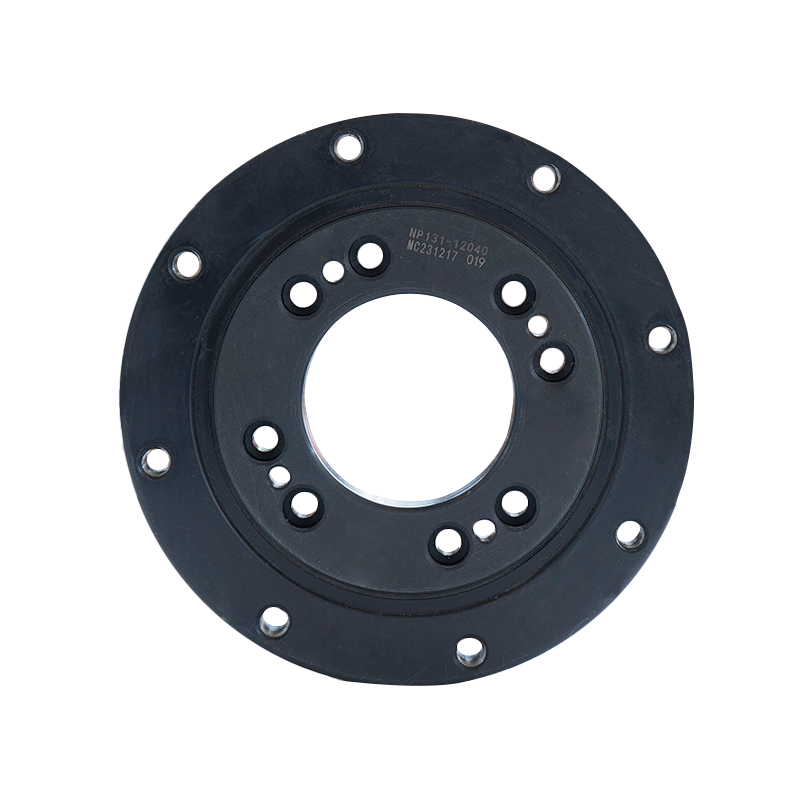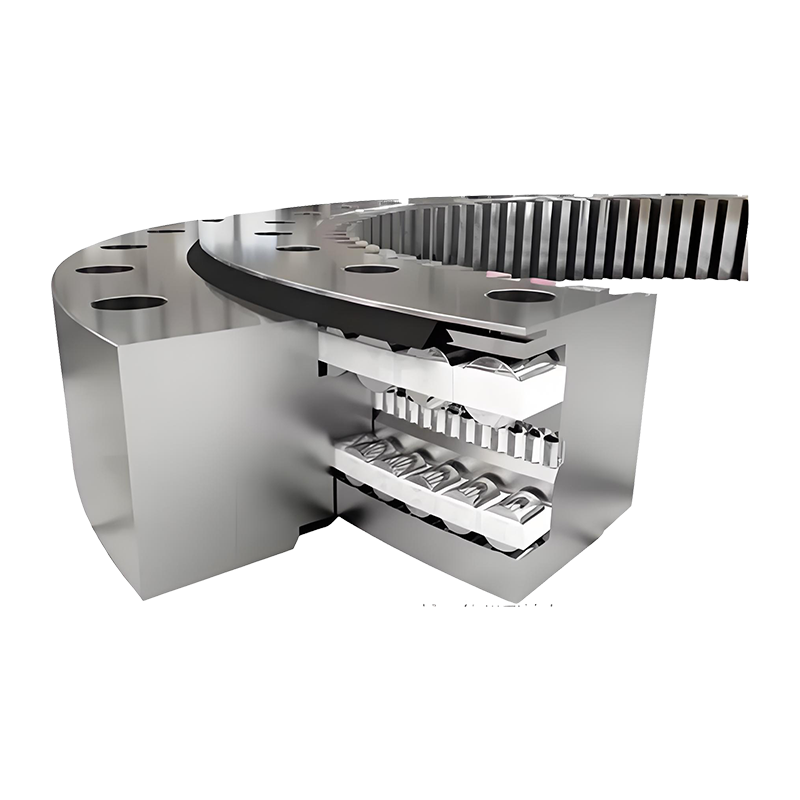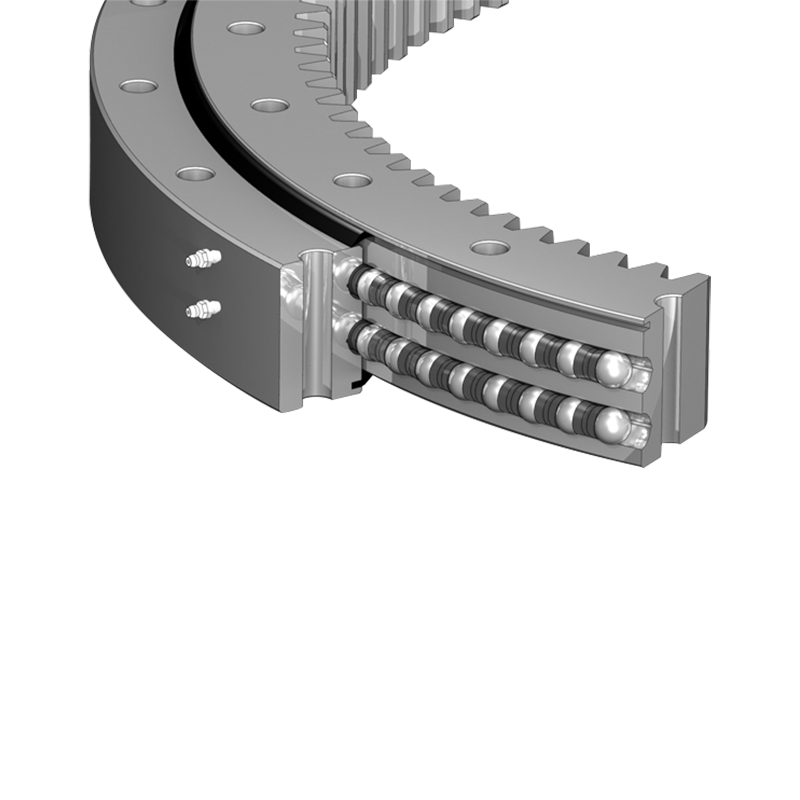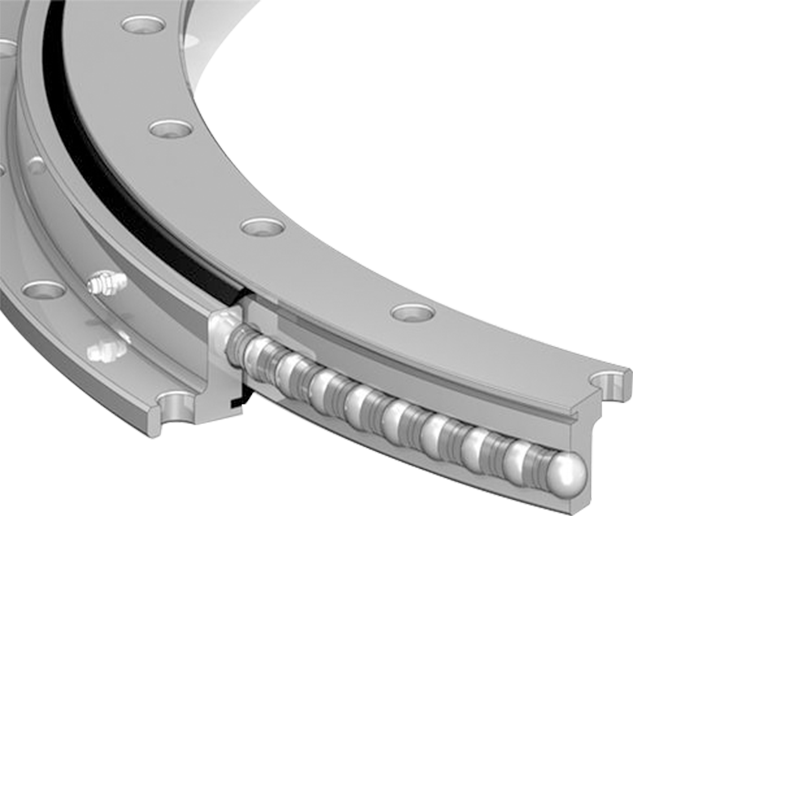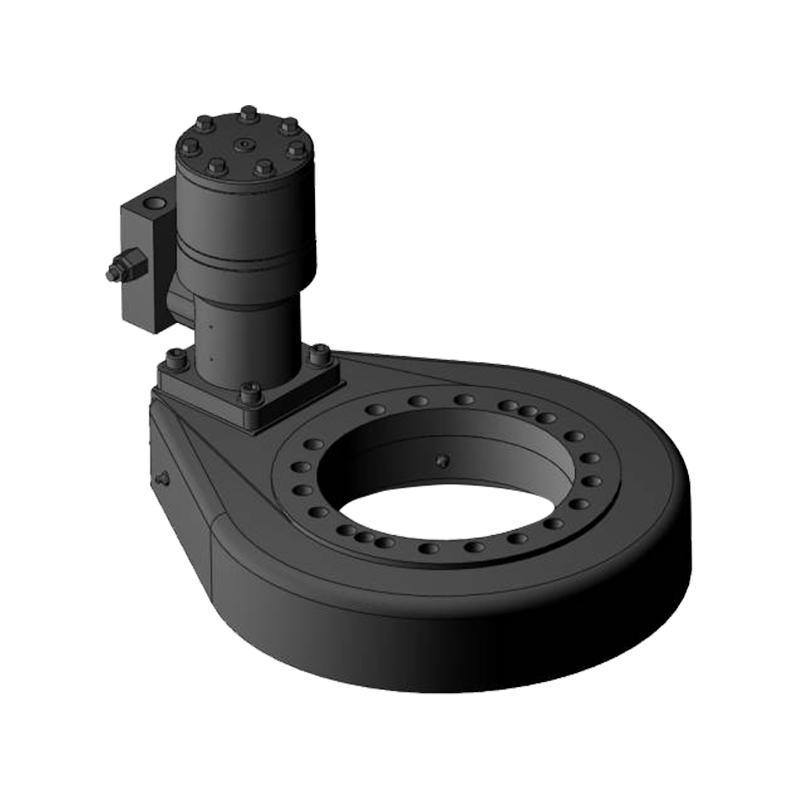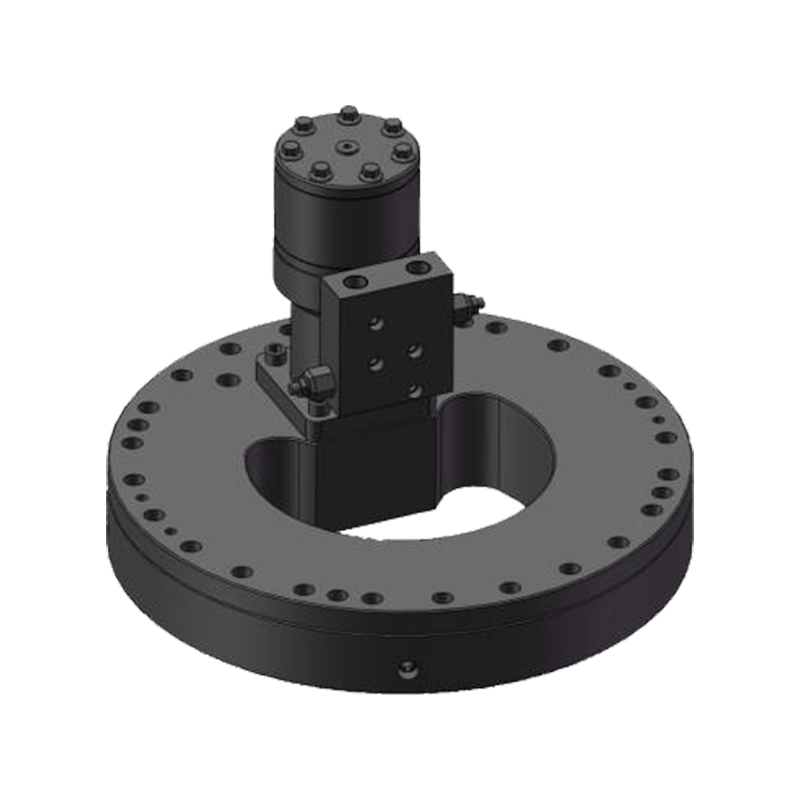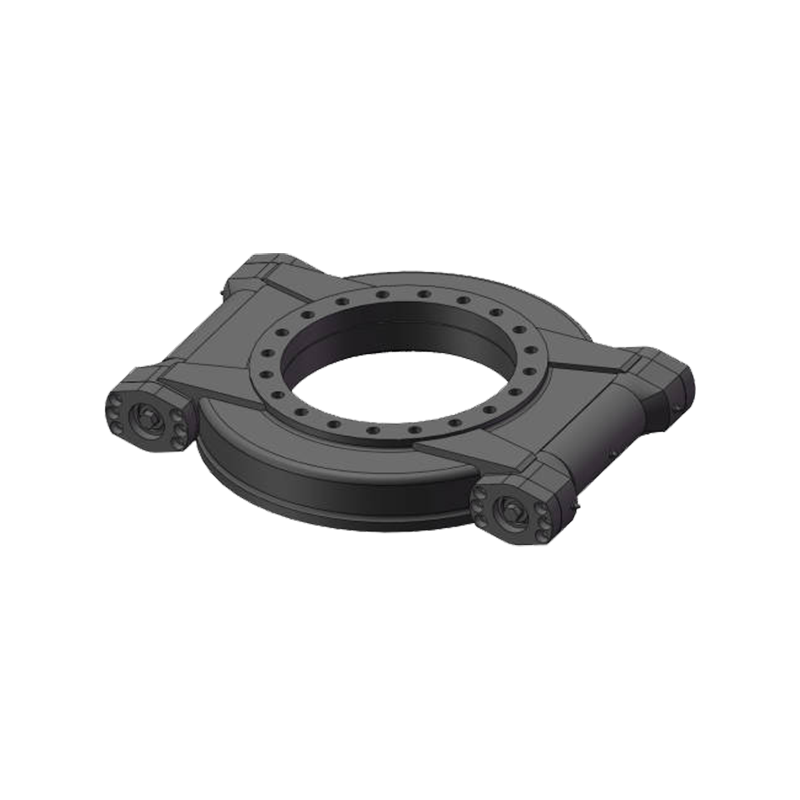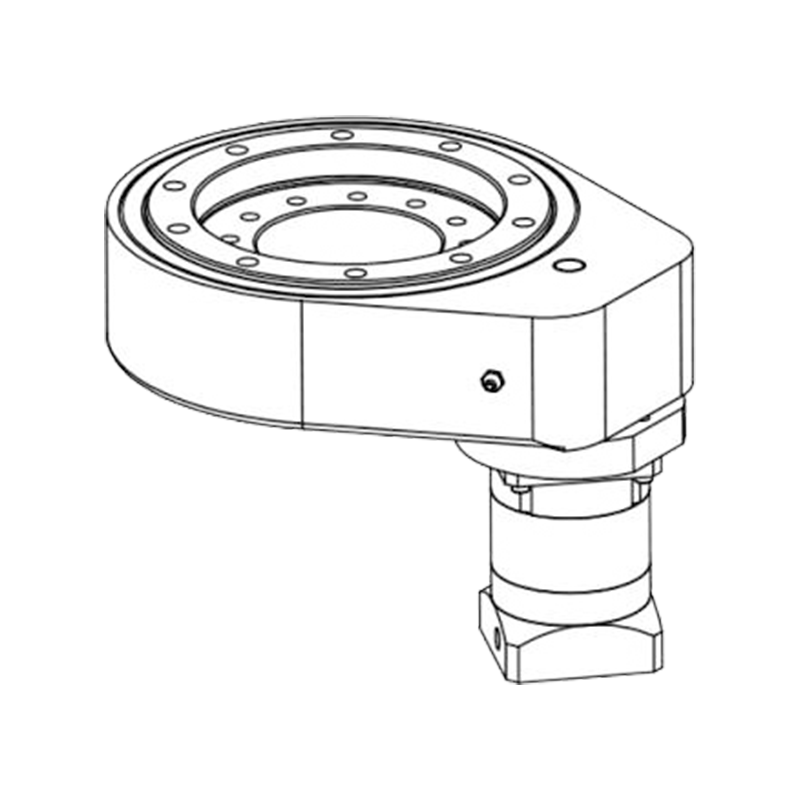Precision and Durability in Heavy-Duty Applications: The Role of Single-Row Ball Slewing Bearings
 2025.05.14
2025.05.14
 Industry news
Industry news
Single-row ball slewing bearings are essential components in various heavy-duty applications, where precision, durability, and reliable performance are paramount. These bearings are designed to handle large axial, radial, and moment loads, making them ideal for machinery and systems that require smooth rotation and minimal maintenance. Found in everything from cranes and excavators to wind turbines and turntables, single-row ball slewing bearings offer a robust solution to the challenges of rotational movement in complex mechanical systems. This article explores the key features, advantages, and applications of single-row ball slewing bearings, highlighting their importance in modern engineering.
1. Understanding the Design and Construction
A single-row ball slewing bearing is composed of three main components: an inner ring, an outer ring, and a series of steel balls. The design is characterized by a single row of balls that are positioned between the inner and outer rings, with a raceway groove on each ring that ensures smooth rotation.
-
Inner and Outer Rings: The inner and outer rings are typically made from high-quality steel to ensure strength, resistance to wear, and durability. The rings are precision-machined to maintain optimal clearance for the rolling elements, ensuring smooth operation under load.
-
Steel Balls: The steel balls are placed in a continuous raceway and are the primary load-bearing components. These balls are uniformly spaced and held in place by a cage to prevent them from colliding. The smooth movement of the balls between the rings allows for efficient load transfer, even under significant radial and axial stress.
-
Raceways: The raceways are precision-machined grooves that guide the movement of the balls. The design of these raceways is critical in ensuring the smooth, low-friction rotation of the bearing. The precise geometry allows for uniform distribution of the load, which helps extend the bearing's lifespan and improve its overall performance.
2. Load Handling Capabilities
Single-row ball slewing bearings are specifically engineered to handle combined loads, including axial, radial, and moment loads. This unique ability to manage multiple types of stress is what makes them indispensable in heavy-duty applications where complex loads are common.
-
Axial Loads: These bearings are capable of supporting axial loads, which act along the axis of rotation. This is particularly important in applications where the bearing needs to support forces that push or pull along the bearing's central axis.
-
Radial Loads: Radial loads, which act perpendicular to the axis of rotation, are another key factor in the design of single-row ball slewing bearings. The ball and raceway configuration allows for the efficient transmission of these forces, ensuring smooth and reliable rotation under heavy stress.
-
Moment Loads: Moment loads, which cause bending or twisting forces on the bearing, are also handled effectively by single-row ball slewing bearings. This ability to resist bending is critical in applications such as cranes, where the bearing is exposed to significant twisting forces.
3. Precision and Smoothness in Operation
The precision of single-row ball slewing bearings is one of their defining features. These bearings are designed to operate with minimal play or friction, ensuring that rotational movements are smooth and accurate. This is especially important in applications that require precise positioning and high-speed rotation.
-
Low Friction: The rolling elements (steel balls) within the raceway reduce the amount of friction compared to other types of bearings, such as plain bearings. This low friction design ensures that the bearing operates smoothly even under high load conditions, preventing overheating and premature wear.
-
Accurate Rotation: The precision design of the raceways and ball elements ensures that the bearing performs with a high level of accuracy, minimizing any wobble or play in the rotating assembly. This is crucial for applications that require exact positioning, such as in radar systems or industrial machinery.
-
Minimal Maintenance: Because of their low friction design and high load capacity, single-row ball slewing bearings typically require less maintenance compared to other types of bearings. This makes them an attractive option for industries that need reliable performance over long periods without frequent servicing.
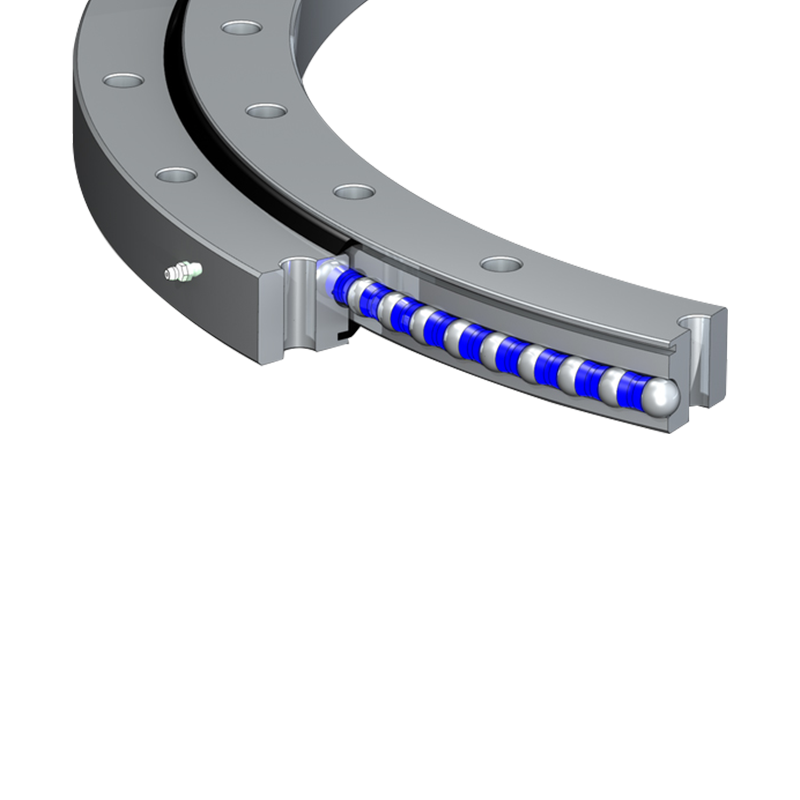
4. Durability and Longevity
The durability and longevity of single-row ball slewing bearings are directly linked to the quality of materials used and the precision of their design. These bearings are built to withstand the stresses of heavy-duty operations, offering extended service life even in harsh environments.
-
High-Strength Steel: The high-strength steel used in the construction of the inner and outer rings ensures that the bearing can endure the high stresses encountered in demanding applications. Additionally, many bearings are heat-treated to further enhance their strength and resistance to wear.
-
Corrosion Resistance: In some applications, single-row ball slewing bearings are treated with anti-corrosion coatings or are made from stainless steel to resist rust and degradation in harsh environments. This is particularly important in marine applications or outdoor installations exposed to moisture and extreme temperatures.
-
Sealing and Protection: To protect the bearing from contaminants such as dust, dirt, and moisture, many single-row ball slewing bearings are equipped with seals or shields. These sealing mechanisms help prevent premature wear and extend the bearing's operational life, especially in environments that require high levels of cleanliness, such as food processing or medical equipment.
5. Applications of Single-Row Ball Slewing Bearings
The versatility of single-row ball slewing bearings makes them suitable for a wide range of applications across various industries. Their ability to handle complex load conditions while providing smooth rotation makes them an ideal choice for systems that require precision and durability.
-
Cranes and Excavators: One of the most common applications for single-row ball slewing bearings is in cranes and excavators. These machines often require bearings that can handle large moment loads, axial loads, and radial loads simultaneously. Single-row ball slewing bearings provide the necessary strength and precision to ensure smooth operation in lifting, rotating, and digging tasks.
-
Wind Turbines: In wind turbines, the slewing bearing supports the nacelle, which houses the turbine's mechanical and electrical components. These bearings need to endure harsh conditions, including constant rotation and exposure to the elements. Single-row ball slewing bearings are an excellent solution for ensuring reliable and efficient rotation of the turbine blades.
-
Solar Panels and Tracking Systems: For solar tracking systems that orient solar panels to maximize exposure to sunlight, single-row ball slewing bearings are used to enable smooth, precise movement of the panels. Their ability to support both radial and axial loads makes them an ideal choice for these systems.
-
Industrial Machinery: Single-row ball slewing bearings are widely used in various industrial machines that require smooth rotational movement. These can include rotary tables, machine tools, and automated systems. The high load capacity and precision of these bearings allow for smooth operations even in high-torque applications.
-
Medical Equipment: In medical equipment such as imaging machines or robotic surgical devices, single-row ball slewing bearings provide the precision and reliability necessary for accurate movement. The low-friction and high-load capabilities ensure that these devices operate smoothly, improving both performance and patient safety.
6. Benefits of Using Single-Row Ball Slewing Bearings
Single-row ball slewing bearings offer several benefits that make them an attractive choice in demanding applications:
-
Space Efficiency: These bearings are compact and space-efficient, which makes them ideal for applications where space is limited. Their ability to support high loads without taking up significant space is particularly advantageous in machinery design.
-
Cost-Effectiveness: While the initial cost of a single-row ball slewing bearing may be higher than traditional bearings, their long service life, low maintenance requirements, and reliable performance make them a cost-effective solution over time.
-
Versatility: The ability to handle a combination of axial, radial, and moment loads makes single-row ball slewing bearings highly versatile, capable of meeting the needs of a wide variety of industrial applications.



